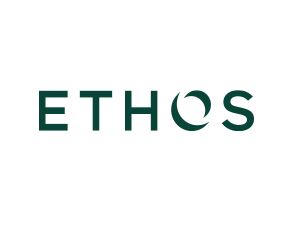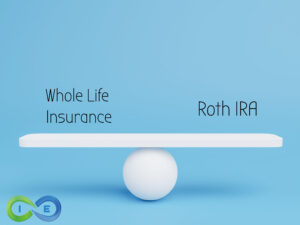So, what is the best life insurance for young adults? Is it term life or whole life?
At I&E, our goal is to align each client with the product and company that best suits your need, based on your unique goals and objectives.
Life Insurance Rates for Young Adults
The following life insurance rates by age are based on a healthy young adult with no pre-existing conditions or dangerous hobbies.
The quotes are from top rated life insurance companies ranked by AM Best with an A- rating and higher.
Best Life Insurance Companies for Young Adults
Here at I&E, we’ll often be asked by clients, or parents of potential clients, “Who are the BEST life insurance companies for a young adult?”
Which is actually…
A pretty difficult question to answer because it all depends on what you would like the “potential” life insurance policy to do? For example, are you looking to have the policy:
- Protect your family?
- Cover a mortgage?
- Cover student loan debt?
- Or protect against any potential lost wages which would result in the event of the insured dying at an early age?
Knowing why…
You want to purchase your life insurance policy will go a long way in determining which “kind” of life insurance policy is going to be the BEST for you or your loved one.
Additionally…
As one does their research, what one is going to find is that a lot of time many financial advisors will typically encourage one to “automatically” purchase a term life insurance policy simply because these will be your most affordable solution.
And while…
We here at I&E understand that purchasing a term life insurance policy will often times be a great solution for many folks, when it comes to being the “right” choice for a younger client, often times we’re torn!
This is because…
Right now, assuming that you’re in your 20s or early 30s deciding to purchase a life insurance policy that is designed to end in your late 50s early 60s may not put you in an ideal situation when it comes time to purchasing another life insurance policy at that time.
You see…
Like it or not, when you hit you’re 50s and 60s, you’re likely to have many of the same health issues most 50 and 60 year olds have today! Which is going to make purchasing another life insurance policy then, much more difficult than it will be for you to purchase this time around.
This is why…
We often like to examine what it would take to purchase a whole life insurance policy now, when your young and these policies tend to be much more affordable, than when your older.
This way, 30 years from now, when everyone who purchased a term life insurance policy is scrambling to find another policy that will protect them into retirement, you’ll already be set and won’t have to worry about a thing.
That is of course…
if you do decide to purchase a life insurance policy in the first place.
Which brings us to why we chose to write this article. You see, in this brief article, we want to take a moment and discuss why now might be the right time for you to get insured.
As well as…
Briefly discuss some of the options that may be available to you that you won’t be exposed to if you simply call into one of the many larger “cookie cutter” agencies you’ll often hear advertising on the Television or radio. So, without further ado, let’s dive right in!
Life Insurance for Young Adults:
[Arguments in Favor of Getting Covered Sooner Rather Than Later]
The need for life insurance for young adults is often a subject of debate revolving around the following question:
should you wait until you are older and more established in life to purchase life insurance or do so from a relatively young age to take advantage of more favorable pricing and the other benefits such policies can offer?
While the answer will vary depending on your individual circumstances and financial objectives, there are a number of reasons that you may want to consider purchasing life insurance as a young adult.
Lock-in pricing at your current age and health assessment:
While term life prices rise substantially as you get older, permanent life insurance such as whole life, indexed universal life, and variable universal life offer the ability to lock in a premium payment amount for life.
While not as cheap initially as term life policies, permanent life insurance premiums will be lower if the policy is taken out at a younger age, especially as it is less likely that health conditions will significantly impact the cost of insurance when you are young.
Build savings via cash value life insurance:
Building cash value in your policy is an option that is only available with permanent life insurance which offers a cash value account.
Whole life policies offer a guaranteed growth rate for the cash account, while IUL and VUL offer the opportunity to realize growth that is linked, to some degree, to the performance of the stock market.
These types of permanent life insurance coverage enable you to build up savings over time that can be used for a variety of purposes.
Protect loved ones from mortgages, private student loans, and other types of debt:
Many young adults find themselves paying off private student debt at the same time they are forming a family. If something happens to them, this debt can prevent their other assets from passing to their beneficiaries if they have not obtained life insurance coverage to protect against such an eventuality.
The same applies to mortgage debt, which can lead to the co-owner of your house, whether your spouse or a significant other, being foreclosed on if they can’t make the payments in the event of your passing.
Provide Education Funds for a Child:
Given the substantial cost of a college education these days, if you have young children, taking out a life insurance policy naming your kids as the beneficiary can help ensure that they are able to attend college if something should happen to you.
Permanent Life Insurance vs Term Life for Young Adults
A common piece of advice when it comes to buying insurance is to “buy term and invest the difference.”
However, while not denying that there may be some situations where this approach works for young adults, this article takes the opposite view – that in many cases permanent life insurance is the better choice for young adults.
The following list of benefits of whole life insurance as compared to term life lend support to this contention.
Permanent life insurance:
Allows you to acquire permanent life insurance coverage at a reasonable overall price:
While it may be cheaper in the short run to buy term life insurance and invest the difference, in the long run, the escalating cost of term life insurance as you age can make buying term life prohibitively expensive.
Enables you to build savings for future use:
It may be tempting to spend rather than invest any money saved by buying term life when you are young; the forced savings aspect of a permanent life insurance policy can help to counteract this temptation.
The funds you save in the cash account of a permanent life policy can be used to fund a variety of major life purchases, whether a car, house, investment property, or other major asset.
Even better, earnings in your cash account grow tax-deferred and funds can be taken from the account in the form of a policy loan or partial withdrawal tax-free up to the amount that you have contributed to the policy.
Can provide you with a guaranteed cash value growth rate:
Unlike term life, which has no savings component, whole life insurance features a guaranteed growth rate in the cash account of a policy.
Whole life policies offered by mutual insurance companies can also pay dividends to help increase returns further.
Other Benefits of Permanent Life Insurance for Young Adults include:
Infinite Banking
Because policy loans can be taken free of taxes from an insurance policy, you can employ an infinite banking strategy by borrowing money from yourself (in the form of your cash value account) and using this money for other purposes, while your remaining cash balance continues to earn funds which can be used to make payments on the loan.
When set up and implemented properly, infinite banking involves taking out a tax free loan, where the earnings from your investment of your cash value are sufficient to pay the entire amount of interest the insurance company charges you for taking out a policy loan.
Retirement and Estate Planning
Because the cash value portion of a permanent life insurance policy such as whole life or universal life grows tax-deferred, these policies can also be used as retirement savings vehicles.
In cases where your contributions to employer-sponsored retirement plans and traditional and Roth IRAs are maxed out, using cash value life insurance can be an effective method of setting aside additional retirement funds.
For young adults, one benefit of permanent life insurance is that policy loans or partial withdrawals can be taken from the policy without penalty (subject to policy provisions) before age 59 ½, whereas most withdrawals before that age from traditional IRAs and employer-sponsored plans such as 401(k)s are subject to IRS penalties.
The death benefit associated with a life insurance policy passes to your beneficiary or beneficiaries outside of probate and free from income taxes, making such policies an excellent vehicle for estate planning purposes as well as for building up cash value for retirement or other uses.
Additionally, participating life insurance companies allow you to use the dividends they pay to buy additional paid-up insurance, further increasing the death benefit.
Life Insurance Plans For Young Adults
Term life is typically the go to product for young adults. However, there are several types of permanent, or cash value, life insurance to choose from, depending on your financial goals, objectives, and risk tolerance.
The different permanent life policies include:
Whole life insurance:
The most conservative form of cash value life insurance from an investment standpoint, whole life insurance features guaranteed growth in the cash value account over time, which can be augmented by dividends in the case of mutual whole life policies.
While the cash value in your whole life policy is not designed to compete with more risky investments such as stock market index funds, they have turned in highly competitive performance when compared with other cash equivalent investments in recent years.
Indexed universal life:
IUL insurance offers cash value subaccounts which are linked to the performance of stock market indexes such as the S&P 500. These subaccounts enable funds placed in them to generate higher returns along with the market in good years, and typically feature a floor of no less than 0%, meaning that if the market declines the subaccount won’t lose any value.
Funds invested in an IUL subaccount are not invested directly in equity market-linked securities, instead the performance of these accounts is guaranteed by the insurance company, which typically purchases equity market derivatives to cover the upside potential of the index the subaccount is tracking.
The indexed universal life subaccounts often feature performance caps and participation rates which limit their upside potential relative to the stock market.
For instance, if the index a subaccount is tracking rises 12% in a year, but the cap, or maximum possible gain in any one period, is 10%, the subaccount will only earn 10% and not 12%. Similarly, if there is a 75% participation rate, the subaccount would earn 9% (75% of 12%) instead of 12%.
Variable universal life:
Unlike IUL policies, variable universal life features subaccounts which directly invest in equity-oriented investments linked to the stock market.
As with IUL, this means such subaccounts can offer performance that tracks the stock market, however, because the subaccounts actually invest in these investments, they can suffer losses in years when the market declines.
Thus, while variable universal life policies typically don’t feature caps or participation rates like IUL policies, they also don’t offer floor rates which prevent losses during bad years in the market.
As a result, VUL policies are most appropriate for policy owners looking to take on higher risk in their cash value account in return for the potential of earning higher returns.
Because poor performance in a subaccount can impact payment of policy premiums, which can, in the worst case, result in a policy lapsing, planning to pay premiums monthly using funds from outside the account or keeping a reserve in cash within the policy is typically the most prudent approach to take with variable universal life.
Now…
We’ll be the first to admit that we just bombarded you with a ton of information. And rest assured, we really have no expectations for any of our clients to absorb much or any of this.
Our only goal…
is that by providing our readers with this information upfront they can get somewhat of an understanding of what options might be available to them so that they might have a better idea what questions they should ask.
You see…
At the end of the day, what “type” of life insurance policy is going to be the “best” for you will ultimately need to be decided by YOU.
All we’re here to do is help you understand what options might be the best for you, provide you with pricing from multiply insurance carriers and give you our honest opinion on WHICH insurance company we feel will give you the greatest opportunity for success.
And…
We may even be able to find an insurance carrier that will meet all of your financial goals while not requiring you to even take a medical exam!
So, what are you waiting for, give I&E a call today and see what we can do for you!



